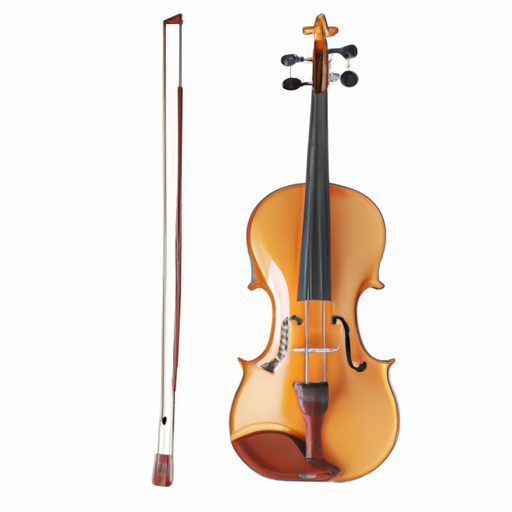
Learning to play the violin can be an incredibly rewarding experience. Whether you dream of performing on stage or simply want to enjoy playing beautiful music, the violin is a versatile and expressive instrument that can bring years of joy and fulfillment. If you're a newbie to the violin and want to fast track your progress, this guide is for you.

Before you begin your journey to mastering the violin, it's important to choose the right instrument. A beginner's guide to choosing the right violin will help you understand the different types of violins, sizes, and features to look for. It's essential to find a violin that suits your body size, playing style, and budget.

If you're unsure about which violin to choose, it's always a good idea to seek advice from an experienced violinist or music teacher. They can help you find a violin that matches your needs and provides the best sound quality for your budget.
Once you have your violin, it's time to learn the basics of violin playing. This involves understanding the different parts of the instrument, including the bow and the strings. Learning how to hold the bow correctly and how to produce sound by bowing the strings is crucial for developing proper technique and tone.
It's important to practice proper bowing technique from the beginning to avoid developing bad habits that can hinder your progress later on. Taking lessons from a qualified violin teacher can help you learn the correct bowing technique and ensure that you're on the right track from the start.
Mastering the violin requires proper finger placement and posture. The correct finger placement on the fingerboard is essential for playing the correct notes and producing a clear tone. Posture is also crucial for maintaining a relaxed and comfortable playing position and preventing tension and strain while playing.
Learning proper finger placement and posture takes time and practice. It's important to focus on these techniques during your practice sessions and make adjustments as needed. Regular check-ins with your violin teacher can also help ensure that you're maintaining the correct finger placement and posture.
Regular practice is the key to mastering the violin. Developing a consistent practice routine and setting specific goals for each practice session can help you make progress. It's important to practice both technical exercises and pieces of music to build your skills and repertoire.
When practicing, it's important to focus on quality rather than quantity. Short, focused practice sessions are often more effective than long, unfocused ones. Remember to take breaks and listen to your body to avoid strain or injury.
Additionally, incorporating various practice techniques such as slow practice, repetition, and breaking down difficult passages can help you overcome challenges and improve your playing.
Developing your ear is an essential skill for any musician. Training your ear to recognize pitch and tone can help you play in tune and express yourself musically. This skill can be developed through ear training exercises and playing along with recordings.
Listening to a wide range of music, especially violin performances, can also help you develop your ear. Pay attention to the nuances of the music, such as vibrato, dynamics, and phrasing, and try to incorporate them into your playing.
Being able to read sheet music is a valuable skill for any violinist. Learning the basics of sheet music notation, including reading notes, rhythms, key signatures, and dynamics, can open up a world of musical possibilities.
Start by learning the names of the notes and their positions on the staff. Practice sight-reading exercises regularly to improve your reading skills. As you progress, you can challenge yourself with more complex pieces of music.
Playing with others is a great way to improve your violin skills and have fun at the same time. Joining a community orchestra, chamber group, or even playing duets with a friend can help you develop your ensemble skills, learn new repertoire, and gain confidence in your playing.
Collaborating with other musicians also allows you to learn from their experience and receive feedback on your playing. It's a valuable opportunity to grow as a musician and expand your musical horizons.
Proper maintenance and cleaning are essential for keeping your violin in good playing condition. Regularly inspect your violin for any signs of damage or wear and tear, such as loose seams or cracks. It's important to address any issues promptly to prevent further damage.
Keep your violin clean by wiping it down with a soft cloth after each use. Avoid using harsh chemicals or excessive moisture, as they can damage the varnish and wood. It's also important to store your violin in a protective case and maintain the proper humidity levels to prevent warping or cracking.
As you gain more experience and confidence as a violinist, you may want to take your playing to the next level. Progressing from a beginner to an intermediate player requires continued practice, exploration of new repertoire, and seeking opportunities for performance and feedback.
Consider taking advanced lessons or participating in masterclasses to further develop your skills. Explore different musical genres and styles to broaden your musical understanding and versatility. Remember to set realistic goals and enjoy the journey of becoming a skilled violinist.
By following this fast track guide to mastering the violin for newbies, you'll be well on your way to becoming a confident and skilled violinist. Remember to practice regularly, seek guidance from a qualified teacher, and most importantly, have fun along the way!